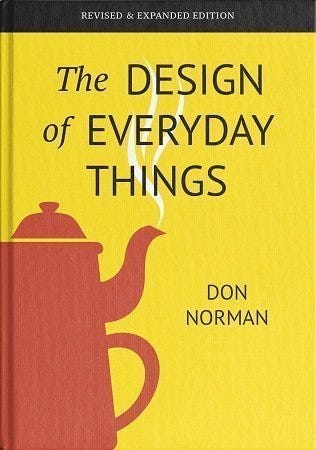My experience in learning UX through Interaction Design Foundation (IxDF)
Graduated as an Engineer; Now I am a Full-time UX Designer!“
You know, I’ve lived a really interesting life.”
— Don Norman
I would say this phrase to others because I started a new career that is different from my discipline. I graduated with a Bachelor of Science in Electrical Engineering from the University at Buffalo, The State University of New York. I spent my whole life abroad to complete high school and university. I never got a chance to live in my hometown for 20+ years, and I basically moved to countries back to back around the Middle East.

Life After Graduation
My goal was to work in a place that is related to my discipline after completing my degree, but it didn’t happen. I wasn’t lucky enough to carry further after spending not just four years but, effectively, many, many years prior. On one side, I didn’t reach the target I wanted throughout my studied. On the other side, the experience of studying abroad has taught me lots of things.
As a result, I decided to bring the knowledge from my previous fields to explore new careers. During the hunt, I was recommended to explore Interaction Design Foundation as it offers a wide range of User Experience (UX) courses. My first choice was to take Google UX Design courses on Coursera.
Next Stop: Google UX Design
I took Google UX Design courses for about four months. Taking new courses that are different from our discipline is challenging, and I was excited to learn them. But there was one thing I experienced that didn’t motivate me to continue learning. The course instructors in the videos were not engaging, and the course didn’t provide a lot of concrete examples. I want to note that this is my personal experience and your experience of taking Google UX Design can be different. As a result, I decided to look for another online education for UX and have decided to join Interaction Design Foundation.
Next Stop: Interaction Design Foundation (IxDF)
Before becoming a member, I wanted to understand the benefits of being a member of IxDF and I was impressed with the structure of the courses. I will list 3 benefits of being a IxDF member:
1) Wide range of Courses & Literature. IxDF offers courses with different levels of difficulty, from beginner to advanced. Also as a member, once you enroll in a course, you’ll have permanent access to the course materials for the entire duration of your membership.

Also, IxDF offers members & non-members free access to textbooks on UX design. These textbooks are written by more than 100 leading designers, bestselling authors, and Ivy League professors.

2) Great Community. The forums are active and there are answers for any post. Also, the forum is divided into channels such as UX in General, Portfolio Review, User Research, Jobs, etc.

3) Unlimited courses. The membership is billed annually, compared to Coursera where the membership is billed monthly. A course of high quality and industry recognition can cost well over $1,000 USD. With a single membership, you can save a lot. The more courses you take throughout your membership period, the cost of taking one course becomes lower.

What courses did I take in IxDF?
I started my journey in IxDF by taking User Experience: The Beginner’s Guide, Become a UX Designer from Scratch, and Design Thinking, The Ultimate Guide courses to get a better understanding of the importance of UX and different areas of study under the umbrella of UX.
How was the experience?
1) The courses brought a lot of interesting information that I could put into practice at work. They guide you throughout the whole course with proper examples, theories, and concepts.
2) Sometimes, the courses contained extra materials which contained interesting information.
3) The course materials have a mix between video & text-based because if you switch between the two, your brain will operate in different ways and that will improve your memory content. However, when I took Design Thinking, The Ultimate Guide, there was more reading than video and I yawned a lot. I hope they might bring some change in the future.

My reflection on learning UX
1) User Experience design is everywhere. In our everyday life, we interact with things that surround us such as sitting in a recliner, ordering meals from kiosk, or maybe using financial apps to make bill payments. Of course, not all designs give the best experiences and it is possible that we had experienced those events.
An example of bad design is provided below which is published on Built For Mars. The article uncovers what is like to book a flight with Delta Airlines on Mobile.
2) User Experience (UX)is about solving problems that people have. It’s about reducing friction. It’s a process that aims to make something easier, more understandable, and more pleasurable. It can apply to so much more than just an app or website. How does that happen?
It starts with a lot of research. You can’t create anything of value unless you understand what kind of problems they want to solve and how you can solve those problems so that the user will want your solution. You can only get that understanding by interacting with users.
IxDF has a course User Research — Methods and Best Practices that gives us insights into the most essential qualitative research methods and how to put them into practice.
3) UX is critical to the success or failure of a product in the market. There are 7 factors that describe user experience, according to Peter Morville a pioneer in the UX field who was written several best-selling books and advises many Fortune 500 companies on UX.
Interesting information to share with you
“[User experience] is used by people to say, ‘I’m a user experience designer, I design websites,’ or ‘I design apps.’ […] and they think the experience is that simple device, the website, or the app, or who knows what. No! It’s everything — it’s the way you experience the world, it’s the way you experience your life, it’s the way you experience the service. Or, yeah, an app or a computer system. But it’s a system that’s everything.”
— Don Norman, inventor of the term “User Experience”
The term “User Experience”, is relatively new and was first used by Dr. Don Norman, a cognitive science researcher who also first described the importance of user-centered design with the notation that design decisions should be based on the needs and wants of users. Also, he is the author of The design of everyday things. It is a recommended book for people who are interested in learning about User Experience Design.

You can read and watch more about UX design from Don Norman on The Nielsen Norman Group.
IxDF has a course that is taught by Dr. Don Norman Design for the 21st Century with Don Norman which gives us insights on how we can apply human-centered design to solve complex global challenges.
If you want to explore other UX design books, check the link below that was published by Maria Taneva.
A New Chapter: My First Job

My previous job at the university was as a Student Assistant for Electrical Engineering courses. Now, I landed my first full-time employment as a Rookie UX designer at Meezan Bank. I am happy with where I am at. 😊
Why did I call myself a Rookie?, because I started a new career that is different from my field of study. I graduated as an Electrical Engineering student and working as a UX designer. This was a new field to me, and I am ready to enjoy working with people from different banking units.
What did I learn from Engineering? In engineering, the goal is to stay within rated parameters, and design for constraints. In electrical in this case, the rated parameters are voltage & current. Rated current means that power dissipation should not exceed the rated temperature.
Design has to meet economic needs. You can create a very expensive design that would meet the technical requirements, but would not be feasible. So it should be a balance between economics (money) & technical parameters.
As I shifted to another domain, I can use those skills and apply them to UX design, I’ve to ensure that projects have to be satisfied by all stakeholders & must be within the specified budget. Customer satisfaction (users who will use it) is also another factor. There has to be a balance between all of them.
The biggest challenge to overcome is to change my mindset toward solving customer problems. I read an interesting article that talks about the topic Output vs Outcome, which talks about a more profound way of thinking about the problems to solve the customer's needs.
Switching careers is not simple
It was one of the most difficult periods of my life. Changing careers is not easy. Before UX, I looked for careers in banking and IT domains. Changing fields can take a lot of effort. It’s not impossible, but it can be achievable.
I spent about a year after graduation looking for opportunities in different domains. The job hunting process in any industry can be tough. You might go through many interviews, and still not getting any offers. That happened a lot to me, even more in the beginning.
You don’t need to go back to school and get an entirely new degree so you can start working in a new industry. A much easier, more accessible way of adding new skills to your arsenal is through online courses. There are now courses that you can complete online that cover every industry and job portfolio you can think of. These are often self-paced and taught by highly credentialed instructors.
Lastly, another way to get opportunities is by leveraging your network. Start by talking to friends and colleagues who work in the industry in which you’re trying to build a career. Let them know that you’re looking for a job and gather any advice that you can on landing a job.
Tips for finding opportunities in the UX world
1) When working in a professional environment, soft skills are important. To design experiences, you need to understand how your users see, feel and think about the world. It is also possible that we want to pitch our ideas to business stakeholders or sell our UX designs to management and clients. To achieve this, soft skills such as Communication, Presentation, Negotiation, Empathy, etc. is required. Understanding them allows you to carry out the role of UX designer successfully.
2) Online courses don’t guarantee you will get a job right away. You have to work on your portfolio and put everything you have learned by creating a case study as well. Portfolios are essential to get recruiters/clients interested in potentially hiring you through your UX case studies.
IxDF has a course How to Create a UX Portfolio where you learn how to craft your UX case studies so they’re compelling.
3) Some jobs require Graphic Design skills. I have seen a lot of jobs with the title “UI/UX”. There, you should be able to have a good understanding of Photoshop, Illustrator, and so on.
I understand that UX designers are only not here to design screens and prototype them, but many jobs will rely on you for that. There is an article from Suruchika Singh and Melissa Perri you should read that talks about how companies see UX people, compared with other roles.
You can view my IxDF profile. If you want to join the community, you could use my referral link to have access to 2 free months of the yearly membership. 😀
Thanks for reading. If you need anything, you can reach me on LinkedIn.

